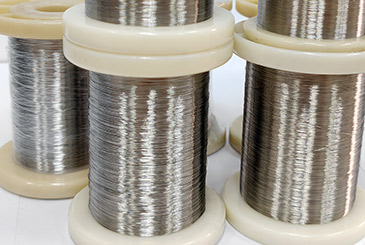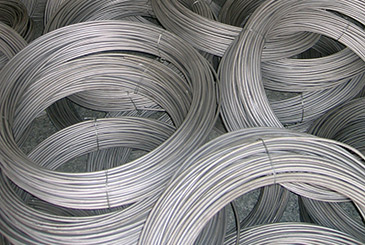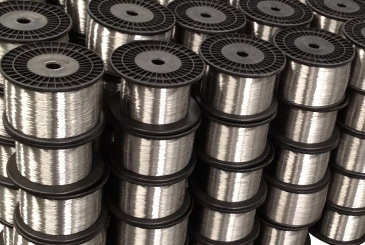
Heating Elements
Includes high power electric heating tube, air heating tube, hydronic heating pipe, titanium metal tube, heater band etc...
These characteristics make nickel-chromium and nickel-chromium-iron resistance wires widely used in applications such as heating elements, resistive heating, industrial processes, and temperature measurement. The specific choice between nickel-chromium and nickel-chromium-iron resistance wires depends on the specific requirements of the application, including temperature range, resistance value, and corrosion resistance needed. Especially Cr20Ni80 alloy has better comprehensive characteristics and it is the preferred type of high quality electric heating elements. All these products are widely used in industrial electric furnace, metallurgy, machinery, household appliances and other industries to produce heating components.



Alloy Name Properties
|
Cr20Ni80 | Cr30Ni70 | Cr15Ni60 | Cr20Ni35 | Cr20Ni30 | |
|---|---|---|---|---|---|---|
| Main Chemical Components |
Ni | Remainder | Remainder | 55.0-61.0 | 34.0-37.0 | 30.0-34.0 |
| Cr | 20.0-23.0 | 28.0-31.0 | 15.0-18.0 | 18.0-21.0 | 18.0-21.0 | |
| Fe | ≤1.0 | ≤1.0 | Remainder | Remainder | Remainder | |
| Maximum operating temperature | 1200 | 1250 | 1150 | 1100 | 1100 | |
| Resistivity 20ºC (μΩ·m) | 1.09 | 1.18 | 1.12 | 1.0 | 1.04 | |
| Density(g/cm3) | 8.40 | 8.10 | 8.20 | 7.90 | 7.90 | |
| Coefficient of heat conductivity (20ºC) (W/m·K) |
15 | 14 | 13 | 13 | 13 | |
| Coefficient of linear expansion (20ºC ~ 1000ºC) (α×10-6/ºC) |
18.0 | 17.0 | 17.0 | 19.0 | 19.0 | |
| Melting point(ºC) | 1400 | 1380 | 1390 | 1390 | 1390 | |
| Tensile strength(Rm/MPa) | ≥650 | ≥650 | ≥600 | ≥600 | ≥600 | |
| Elongation(%) | ≥20 | ≥20 | ≥20 | ≥20 | ≥20 | |
| Accelerated life test(Hours/ºC) | ≥80/1200 | ≥50/1250 | ≥80/1150 | ≥80/1100 | ≥50/1100 | |
| Microscopic structure | Austenite | Austenite | Austenite | Austenite | Austenite | |
| Magnetism | Nonmagnetic | Nonmagnetic | Weak magnetic | Nonmagnetic | Nonmagnetic | |
|
Alloy Name |
20 |
100 |
200 |
300 |
400 |
500 |
600 |
700 |
800 |
900 |
1000 |
1100 |
1200 |
|
ºC |
ºC |
ºC |
ºC |
ºC |
ºC |
ºC |
ºC |
ºC |
ºC |
ºC |
ºC |
ºC |
|
|
Cr20Ni80 |
1 |
1.006 |
1.012 |
1.018 |
1.025 |
1.026 |
1.018 |
1.01 |
1.008 |
1.01 |
1.014 |
1.021 |
1.025 |
|
Cr30Ni70 |
1 |
1.007 |
1.016 |
1.028 |
1.038 |
1.044 |
1.036 |
1.03 |
1.028 |
1.029 |
1.033 |
1.037 |
1.043 |
|
Cr15Ni60 |
1 |
1.011 |
1.024 |
1.038 |
1.052 |
1.064 |
1.069 |
1.073 |
1.078 |
1.088 |
1.095 |
1.109 |
|
|
Cr20Ni35 |
1 |
1.029 |
1.061 |
1.09 |
1.115 |
1.139 |
1.157 |
1.173 |
1.188 |
1.208 |
1.219 |
1.228 |
|
|
Cr20Ni30 |
1 |
1.023 |
1.052 |
1.079 |
1.103 |
1.125 |
1.141 |
1.158 |
1.173 |
1.187 |
1.201 |
1.214 |
1.226 |
| – To obtain resistance at working temperature, multiply by the factor in above table. | |||||||||||||